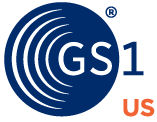-
Powered by GS1 Standards, the Global Location Number (GLN) let businesses know who is involved in transactions and where things are located throughout the supply chain. By uniquely identifying parties and locations, a GLN helps a business track product, optimize processes, and provide greater visibility to transactions worldwide. A GLN does for parties and locations what UPCs (or GTINs) do for products.
GLNs are globally unique and interoperable. They can be shared across trading partners to accurately and uniquely identify locations. Using GLNs can help improve visibility into a product’s location at any point in the supply chain.
-
Related Topics
GLN vs. GTIN
While GLN and GTIN might look similar, the data they hold isn’t the same. Keep in mind that a GLN is a 13-digit number used to identify locations in the supply chain. Meaning, you can quickly track the location of a product as it moves from location along the supply chain via a GLN. A GTIN (Global Trade Item Number) is a product identification number. Each GTIN is unique and recognized internationally. A GTIN-13 is a 13-digit number assigned to products outside of North America. A UPC (Universal Product Code) is a 12-digit number used for the same purpose in North America. GTINs and UPCs are used throughout the supply chain and at point-of-sale terminals, as well as any other locations the information about that product needs to be accessed.
Why use a GLN?
There is a continued need for greater accountability, efficiency, and visibility along the supply chain. GLNs help take the confusion out of sharing important information about companies and locations.
A GLN can also help:
Provide a consistent, standardized way to identify parties and locations.
Increase efficiency through quick, accurate, and actionable data exchange.
Create a single source of truth for reliable party and location information, such as name, address, and purpose.
Use the same global identifier throughout markets and channels, allowing you and your trading partners to readily communicate information across systems.
Play a critical role in meeting regulations. In healthcare, a GLN will help fulfill requirements for the Drug Supply Chain Security Act.

Start Small
If you only need to identify a few locations, you can purchase individual GLNs. An individual GLN license is best for those looking to keep track of a few locations along the supply chain.
License a GLN for $30 and get a free subscription for one user to GS1 US Data Hub®, an online tool you can use to identify, manage, and share your locations.
Think Bigger with a GS1 Company Prefix
Need to identify multiple locations? Need to identify products or cases/pallets? It might be best for you to license a GS1 Company Prefix, which can be used to identify more than just locations. You can license a GS1 Company Prefix with the capacity to accommodate as many locations (or products) as you need to identify, each type of identifier is separate.
How Many GLNs Do You Need?
Once you’ve determined the types of locations you’re looking to identify, decide how many Global Location Numbers you need. Some companies allocate one GLN for their entire business, while others allocate individual numbers for every location.
How to Get a GLN
If you are looking to identify an entity and have a GS1 US GTIN or a GS1 Company Prefix, you already have an entity GLN. To access it, visit myGS1US.org. For pharmaceutical dispensers (including hospitals, retail pharmacies, home health agencies, and long-term care facilities) that work with certain pharmaceutical wholesalers or Group Purchasing Organizations, a GLN might already be assigned for your location. The location number provides flexibility for every level of identification. As a result, you can track anything moving through the supply chain and uniquely identify the locations involved in its business transactions.

What to Expect
Our checkout process has three simple steps:
- Select a Global Location Number or GS1 Company Prefix and add them to your cart.
- Provide your company and contact information.
- Pay (here is our W-9 form).
After you complete the checkout process, you will receive a welcome email from GS1 US. It will include all the information you need to get started, including access to myGS1 US with your online member center.
The GLN used with the GTIN and other GS1 Standards creates a clear window into where and how your products move through the global supply chain. Better manage your party and location data to minimize costs from missing or inaccurate data. Unique identification numbers make this possible.


